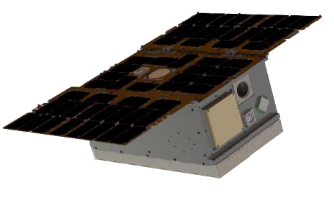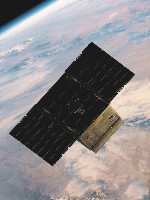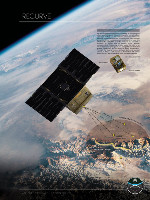| Spacecraft | Recurve |
|---|---|
| Spacecraft type | CubeSat |
| Units or mass | 6U |
| Status | Reentry 2024-08-02. Was operational until 2022-08-29 (SmallSat 2023 presentation) |
| Launched | 2022-07-02 |
| NORAD ID | 52944 |
| Deployer | RailPOD [Tyvak],? |
| Launcher | LauncherOne (ELaNa 39) |
| Organization | Air Force Research Laboratory (AFRL) |
| Institution | Military |
| Entity | Government (Civil / Military) |
| Headquarters | US |
| Oneliner |
Demonstrating adaptive radio frequency system capability from LEO, evaluating mesh network behavior across multiple nodes to route data wherever it needs to go. |
| Description |
The Recurve satellite propels CubeSat technology forward by demonstrating adaptive radio frequency system capability from Low Earth Orbit, evaluating mesh network behavior across multiple nodes to route data wherever it needs to go. Recurve is the latest in several low-cost CubeSats designed, built and operated entirely in house at the Space Vehicles Directorate located on Kirtland AFB. The spacecraft will validate a cognitive RF system able to perform in-situ, adaptive decision-making. In addition, Recurve will evaluate mesh network behavior across multiple nodes in multi-domain applications, bringing information to wherever the warfighter is located. |
| Results | |
| Failure cause | Initially solar panels did not deploy. All data hint that the flight computer failed, and it was probably caused by radiation. |
| Sources | [1] [2] [3] [4] [5] |
| Photo sources | [1] [2] [3] [4] |
| On the same launch |
Last modified: 2024-09-29



